| Columns Retired Columns & Blogs |
Every now and then I see a reference to a strain gauge cartridge. This seems like a very under-reported technology.
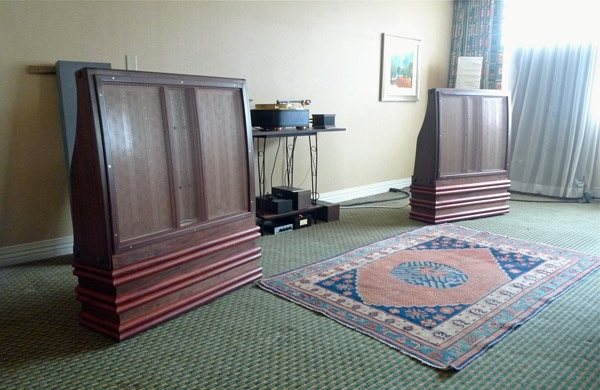
I need to explain all this about them, so when I tell you that while sitting in the EMIA room, I listened to one whole side of a crippling good record called Making Music, which features Zakir Hussain on tabla and vocals, John McLaughlin on acoustic guitar, Hariprasad Charasia playing flute, and Jan Garbarek on tenor and soprano sax. At the end of that one side, I was sobbing in public. I was shaking! I was too broke up and embarrassed to talk or write listening notes. I exclaimed to my friend, "You did it!" You f*&#ing did it!"
Later, in the bar I asked some other audio scribes what they thought about the EMIA room and one put his finger to his ear and said, I thought the highs were a little bright. Another said, "I thought the bass was a little underdeveloped." I told them I didn't notice—I was too busy having one of the strongest musical experiences of my life.
Music played through custom Quads from Wayne Picquet of Quads Unlimited in Florida via Dave Slagle's Direct Drive Amp ($36,000 for two amps and two full-range electrostatic speakers) made me shake and sob (there are a bunch of witnesses). It made me forget I was an audio reviewer and, walking out, it reminded me why I love audio: Impassioned savants being themselves doing what they love. And, that is the raison d'être of the whole CAF exhibition.
Slagle's direct drive amps replace the owner's amplifiers and the stock Quad '57 step-up transformers and crossovers with two discrete, bandwidth-limited, EL-34 amps—one for the bass panel and one for the mid-treble. Also playing was an EMIA Silver (RIAA) Phono Corrector ($12,000), the EMIA Strain-Gauge Phono System ($8100) and the EMIA Silver MC SUT ($3600).
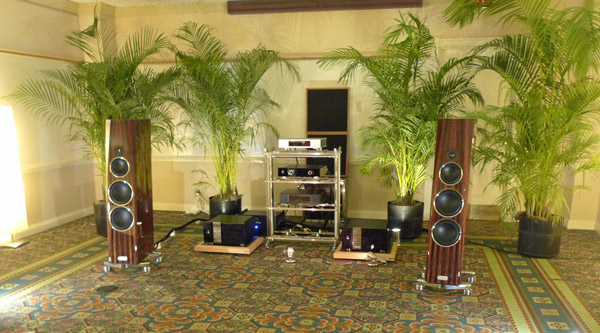
Doug White of PA retailer The Voice That Is is committed to making the realm of high-end audio a lush beautiful realm where you sit down and listen to music; and the hi-fi does all the heavy lifting. Like the good professional he is, Doug puts his Tidal electronics and speakers together in a room with gentle lighting and a forest of palms—just so scribblers like me can walk out forget to ask about the gear.
Doug played a "Sunday Kind of Love" from Mary Stallings Live at the Village Vanguard and it was lush and vibrant. The soundstage was giant and tangible. Everything was just right and easy flowing—but not for an instant boring. Like I say, I forgot to ask about the equipment. So I emailed him.
It turns out, Mary Stallings was presented to me by: Tidal Contriva G2 Speakers ($65,000) plus a Preos-D preamplifier with DAC and phonostage ($31,190) plus Impulse monoblock amplifiers (380W at $64,990) plus an Aurender W20 Reference Music Server ($17,600). As I was walking out, I turned and looked at Doug and said, "Amen Brother!"
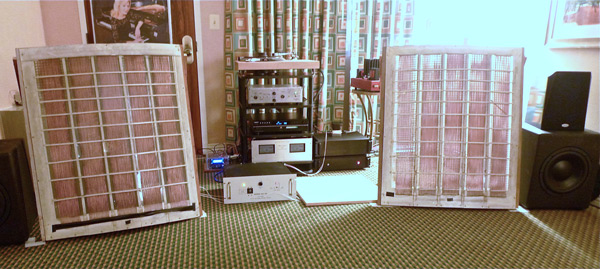
One of biggest stars of this 2015 Capital Audiofest was veteran tube amp designer, David Berning. He was everywhere. His prototype phono-line preamp anchored the "it-changes-every-hour" system in the DCAudioDIY room (above). His direct-drive amp drove homemade electrostatics (made me a friend of Mr. Berning) in that same room.
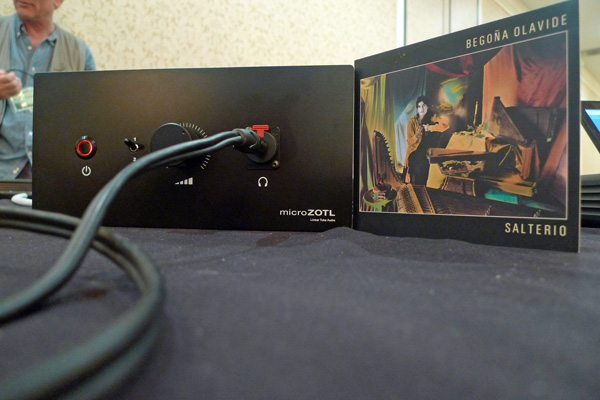
His 10W Linear Tube Audio ZOTL amps ($39,200) drove the powered Audioism line arrays in the Ultra Audio/Audioism/Linear Tube Audio room . . . and, David's really excellent new headphone amp ($1100, above) was featured along with the seductive-sounding Woo Audio WA7D Firefly ($1199) in Todd Garfinkle's M•A Recordings listening area.
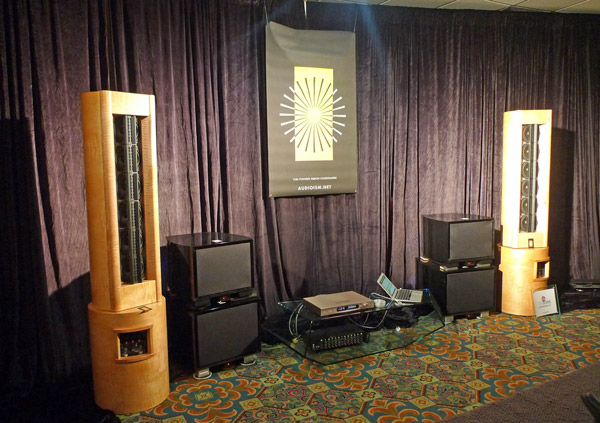
This was Audism's first ever audio show, but you wouldn't know it from the beautifully lighted display and the generous satisfying sound. This room was a pleasure to be in and the Mytek Manhattan DAC ($5000) and Audioism powered speakers ($40,000/pair) were singing pretty nice songs.
As many of you know, I used to love horns. I loved them because when the stars lined up just right, the world's best horns could play waaaaaay closer to real life—both dynamically and scale-wise—than any audiophile speaker at any price. Jump factor pinned the needles. Unfortunately, I gave up on them years ago. Why? Because full-range horns were never truly coherent and they made solo singers and musicians appear too big. (On the good side, because they played big, horns could do opera better any little boxes.)
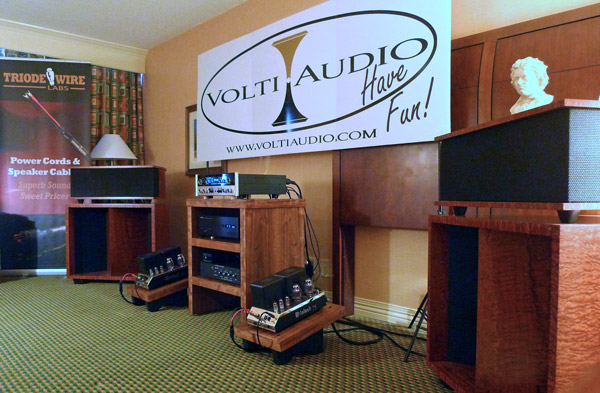
And then, a few weeks ago I heard a giant horn system designed by Jeffrey Jackson of EMIA and (incredulously) it seemed perfect in every way—but it cost $350,000! Today at CAF I played a couple of my own CDs through the Volti Audio Vittora horns and they seemed perfect too—and a pair of Volti Vittoras costs only $25,000! The Voltis (reviewed by Art Dudley in September 2013) played my Bach Goldberg Variations (with Ito Ema at the keyboard) with a gentle liquid smoothness that exceeded any liquid smoothness I have heard before. Piano sound was among the most realistic I have ever experienced from a loudspeaker. I wrote in my listening notes that I think I could live with these for the rest of my life! Bravo Volti!

Every now and then I see a reference to a strain gauge cartridge. This seems like a very under-reported technology.

Clarification - Audioism is using the 10 watt ZOTL amp in their $40K speakers, but Linear Tube Audio will be selling the ZOTL 10 Power Amplifier in October for $2400.

Actually it's spelled Audioism

Wondered what you use for speakers now, Herb?

Glad to see a review of the Volti. I have modified my LaScala's and built a horn sub that delivers as close to full range as you can get. Modern DSP can now flatten the frequency response or any flavor you like. When more people figure out how to do DIY, there will be kit a plenty for few dollars in this over inflated industry.